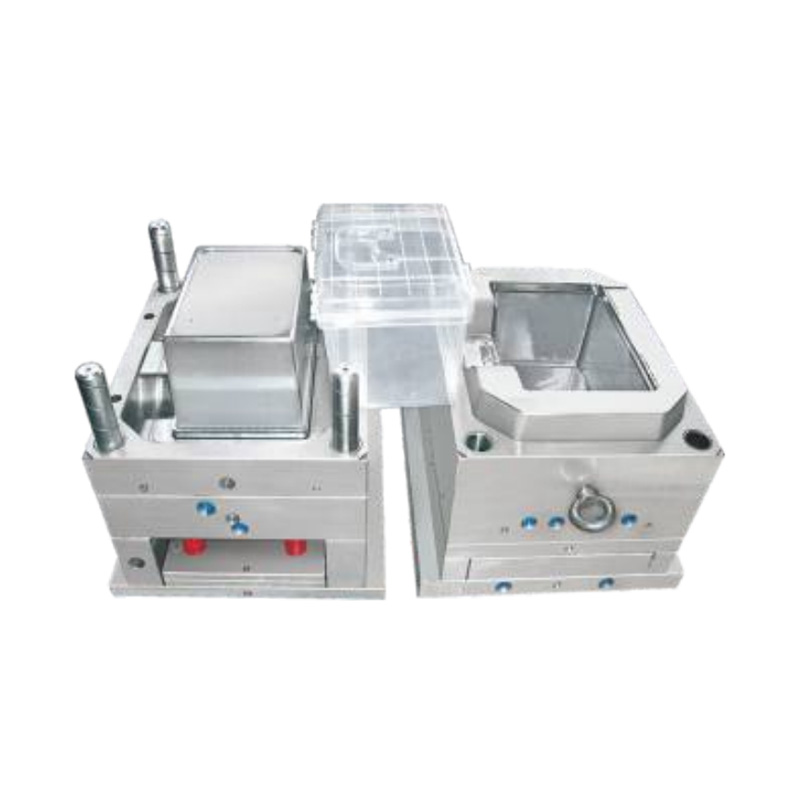Industrial Air Cooler Plastic Mold
As an OEM factory specializing in the design and manufacture of air co...

The quest for precision in manufacturing is relentless, driving innovations that allow for the creation of complex, reliable, and identical parts at a massive scale. At the heart of this revolution for plastic components lies the plastic injection molding die. But how exactly does this engineered marvel translate into the high-precision manufacturing we see in industries from medical devices to aerospace?
The foundation of precision is laid long before the first pellet of plastic is melted. It begins with the design and creation of the die itself. A high-quality plastic injection molding die is a masterpiece of tool and die making, typically crafted from hardened steel or aluminum through Computer Numerical Control (CNC) machining and Electrical Discharge Machining (EDM). This process ensures that the cavity of the die is a perfect, negative mirror image of the final desired part. Any imperfection in the die—a slight miscalculation in dimension, a suboptimal surface finish—will be faithfully reproduced on every single part it produces. Therefore, the initial investment in a precision-machined die is non-negotiable for achieving manufacturing excellence. Partnering with a reputable plastic mold supplier is critical here, as their expertise in die design and fabrication directly dictates the potential quality of the final plastic mold parts.

Once a perfect die is created, its primary superpower is replication. In traditional manufacturing, each part might have slight variations. However, a single plastic injection molding die can produce millions of parts with virtually identical dimensions. The mold cavity acts as a rigid, unchanging boundary that the molten plastic must conform to. As the plastic cools and solidifies within this confined space, it takes on the exact geometrical shape of the cavity. This process eliminates the dimensional drift common in other processes. For a manufacturer, this means that the ten-thousandth part produced will have the same critical tolerances as the first, guaranteeing consistency in assembly and performance. This level of repeatability is what makes the process indispensable for producing interchangeable plastic mold parts in complex assemblies.
Many modern products require features that are impossible or prohibitively expensive to create with other methods. The plastic injection molding die is uniquely equipped to handle this complexity. Through sophisticated engineering, dies can incorporate moving components like sliders, lifters, and unscrewing mechanisms. These features allow for the creation of complex undercuts, internal threads, and intricate living hinges directly in the mold. When the die opens, these components move in a specific sequence to release the part without damage. This capability consolidates what would otherwise be multiple manufacturing and assembly steps into a single, efficient molding cycle. A skilled plastic mold supplier leverages this capability to design dies that produce highly complex plastic mold parts as a single, integrated piece, reducing assembly time, weight, and potential failure points.
Precision isn't just about size; it's also about appearance and feel. The surface finish of a component is crucial for both aesthetic and functional reasons, such as reducing friction or improving light diffusion. The plastic injection molding die provides ultimate control over this aspect. The cavity walls can be polished to a mirror finish, textured to mimic leather or grit-blasted for a matte appearance, or even engraved with fine details and logos. The molten plastic replicates this surface finish with remarkable fidelity. This means that every plastic mold parts ejected from the die comes out with a consistent, ready-to-use surface, often eliminating the need for secondary finishing operations like painting or sanding, which adds cost and introduces variation.
A plastic injection molding die is not just a shape; it's a highly engineered thermal management system. Precision is easily lost if the plastic does not cool uniformly. To prevent warpage and internal stresses, dies are equipped with complex cooling channels that circulate water or oil to extract heat consistently from all areas of the part. Furthermore, the design of the feed system—the sprue, runners, and gates—is critical. A well-designed system ensures that molten plastic fills the cavity evenly and simultaneously from multiple points, preventing defects like weld lines (where two flow fronts meet) or air traps. An experienced plastic mold supplier uses advanced simulation software to perfect this flow and cooling design before the die is ever built, ensuring that the final plastic mold parts are not only dimensionally accurate but also structurally sound.
The collaboration between a manufacturer and a proficient plastic mold supplier in designing and building this tool is what ultimately unlocks the full potential of precision manufacturing for high-quality plastic mold parts.